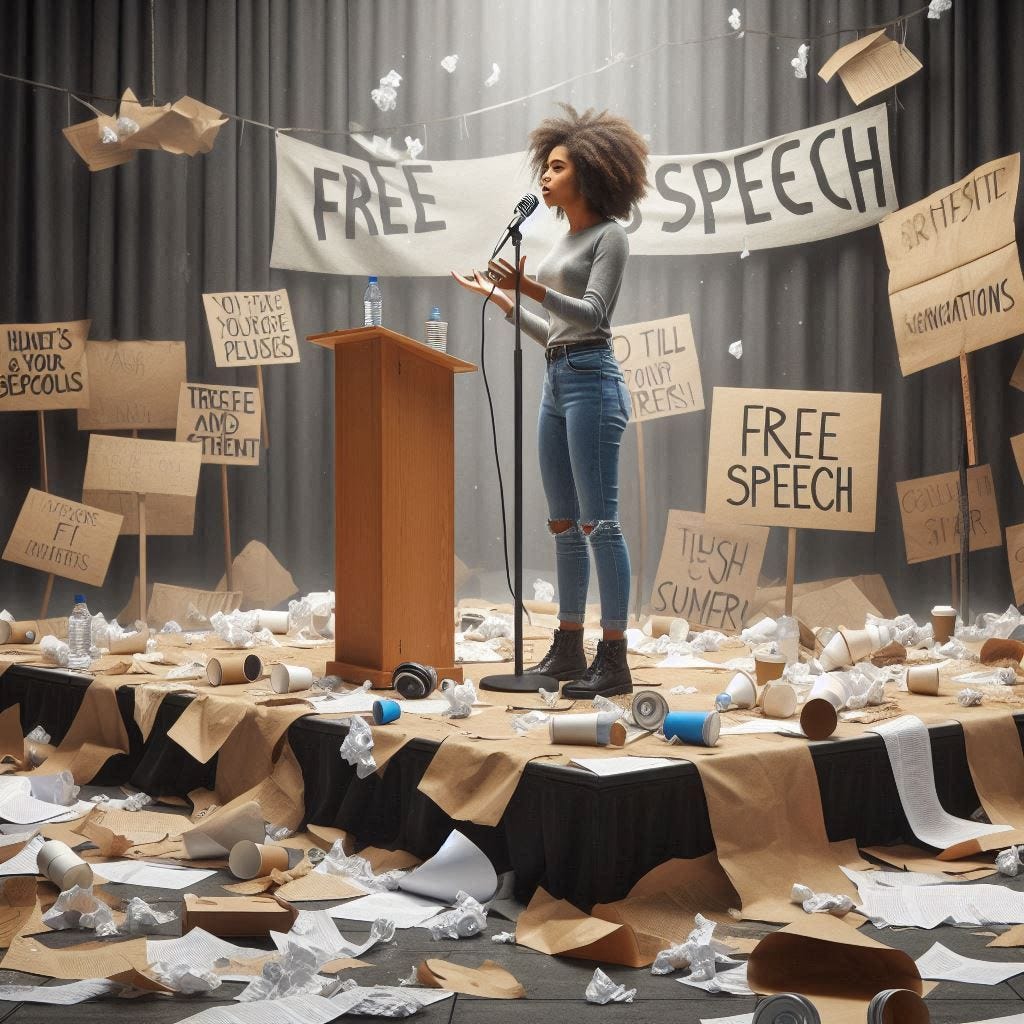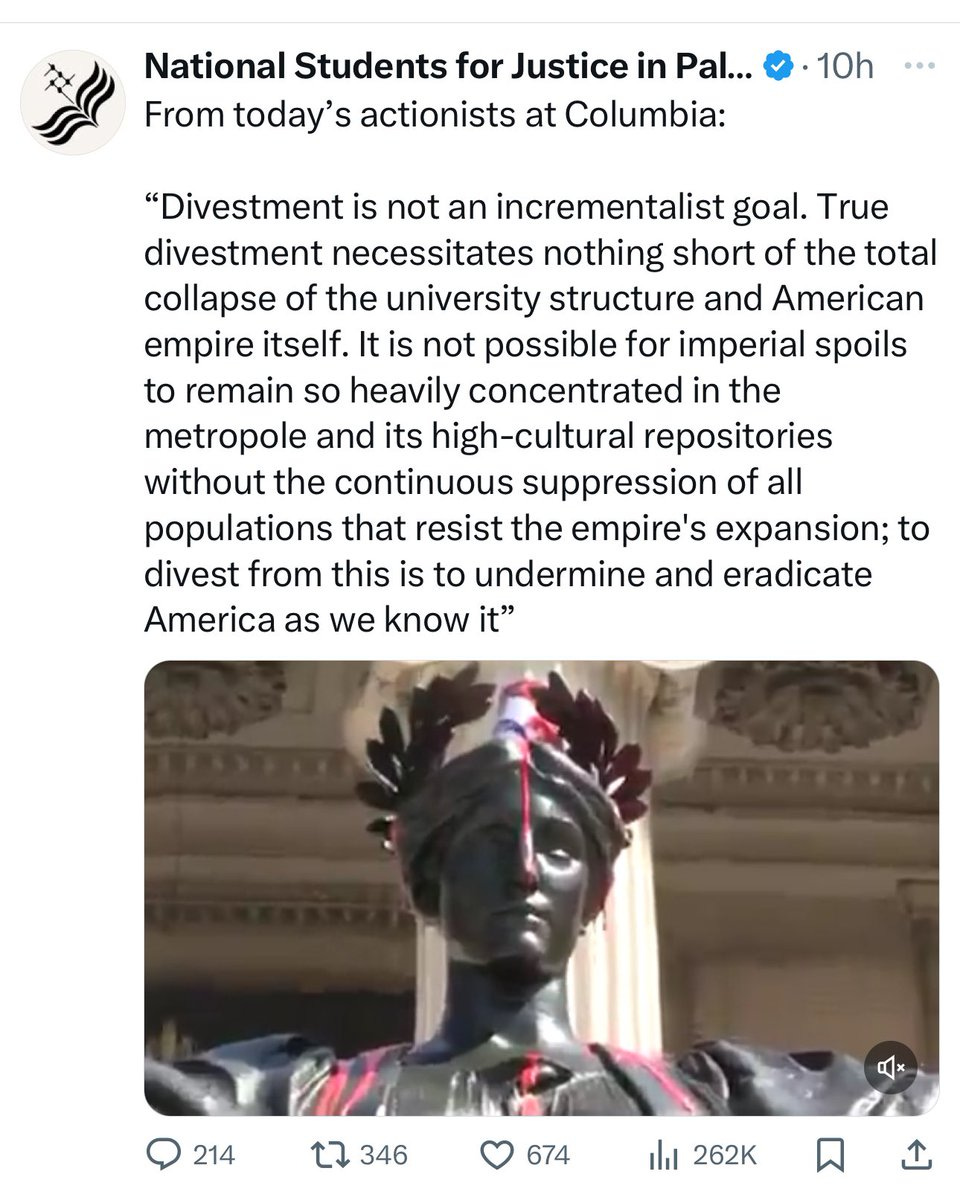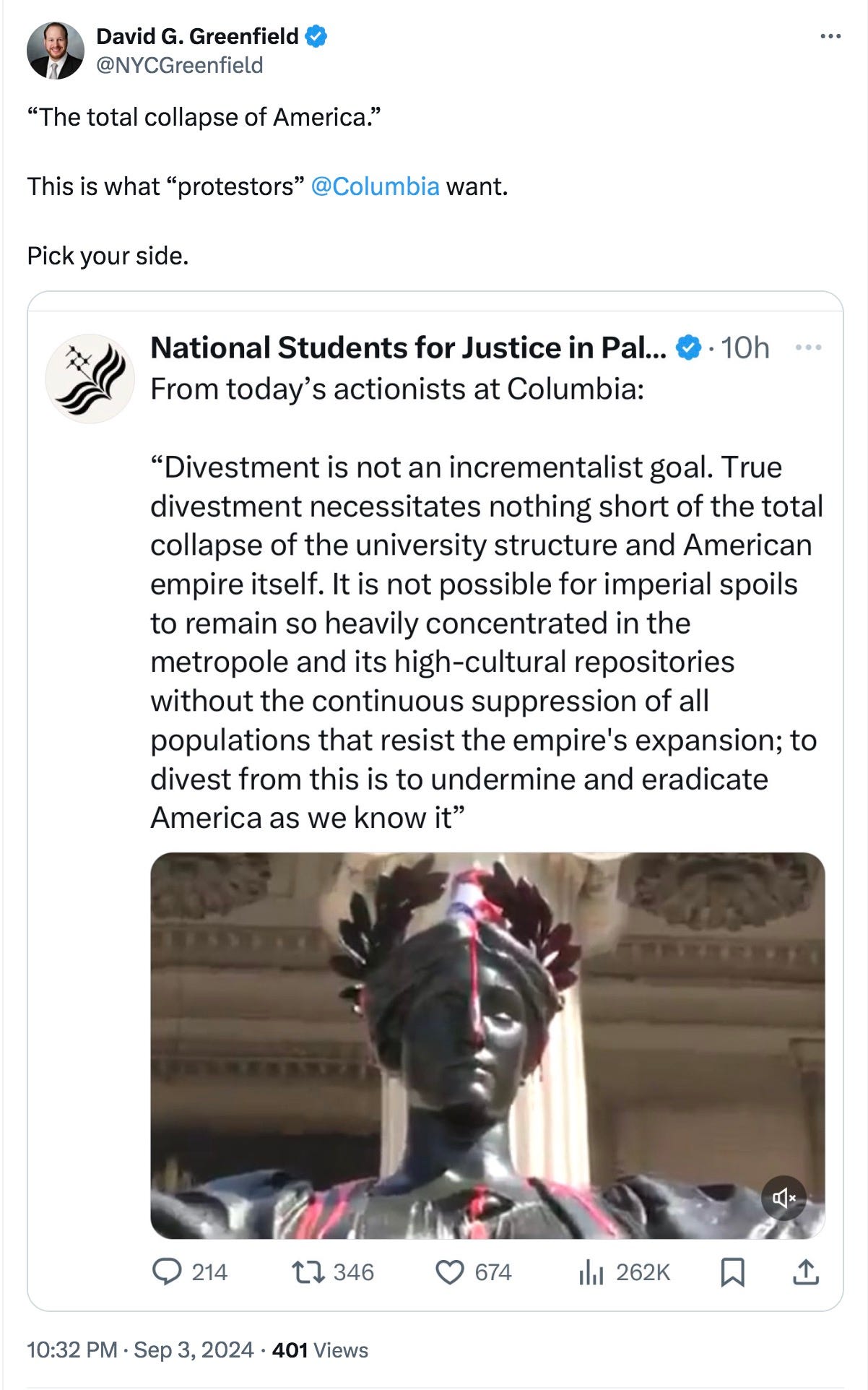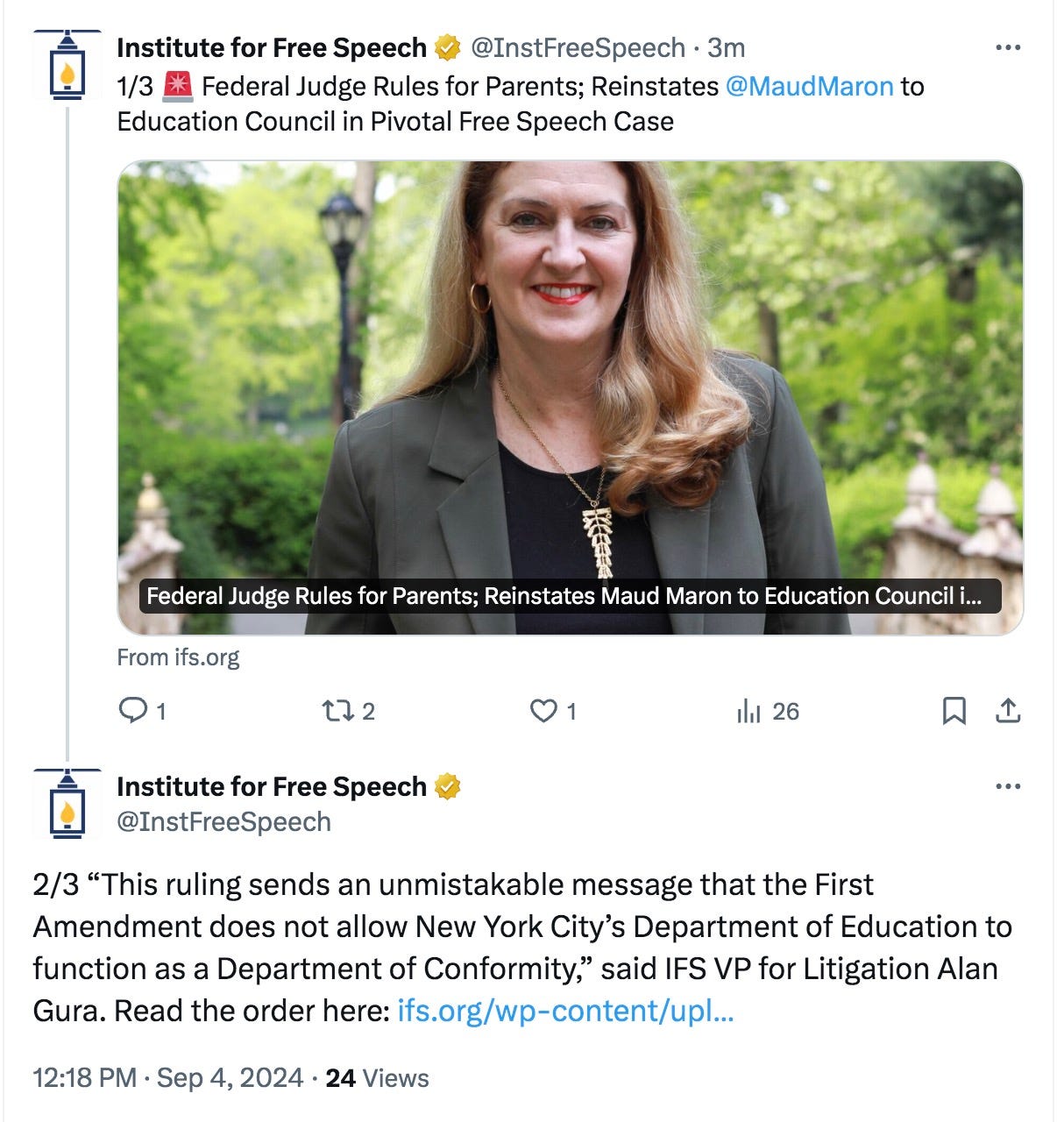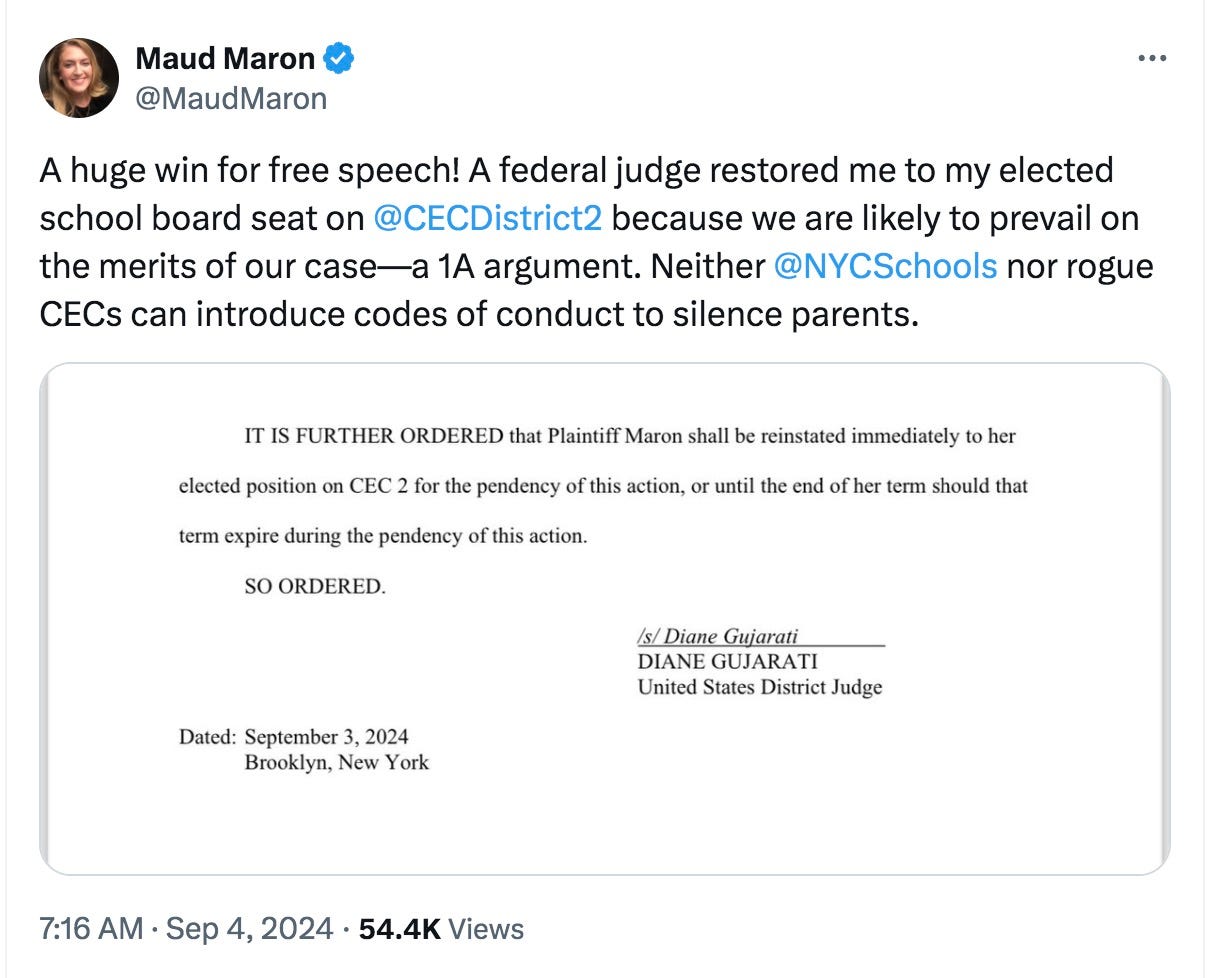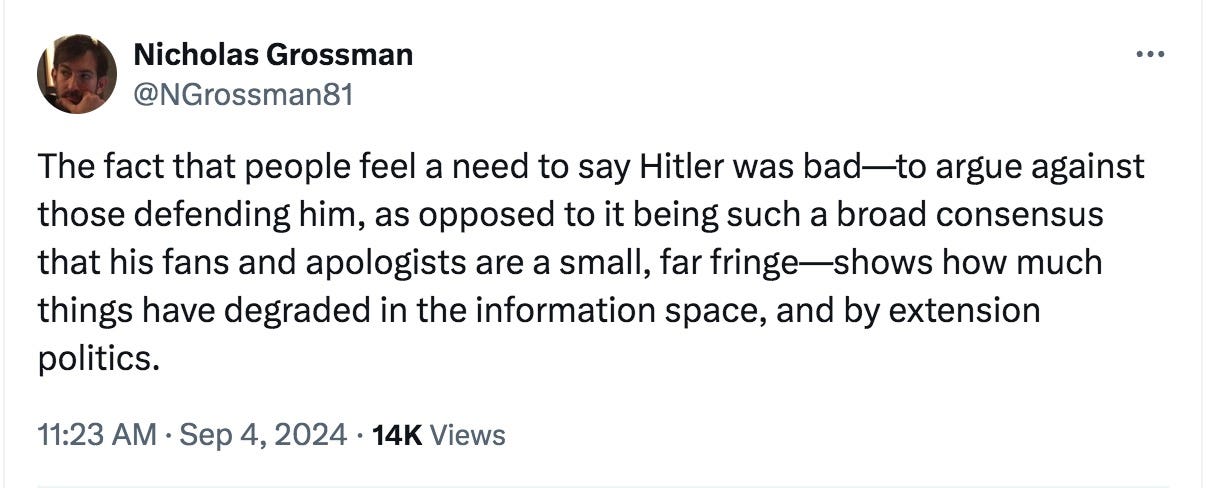E-Pluribus | September 4, 2024
College speech codes really are as bad as you think; governments continue to support censorship; and looking for a truce in the campus culture wars.
A round-up of the latest and best musings on the rise of illiberalism in the public discourse:
Max M. Schanzenbach and Kimberly A. Yuracko: College Speech Policies Are a Mess
Writing for the Chronicle of Higher Education, Max Schanzenbach and Kimberly Yuracko argue that speech codes at colleges are confusing and often contradictory. Schanzenbach and Yuracko say colleges should stop trying to micromanage student speech and let the First Amendment do its thing.
Private universities are not bound by the First Amendment, but they are bound by Title VI of the Civil Rights Act to enforce their policies in a way that does not discriminate on the basis of race, color, or national origin. But many universities have student-speech policies that are inconsistent, vague, and in some cases seemingly illegal on their face.
[. . .]
[T]he problem is not simply that universities have poorly written policies. It is that such policies are likely to lead to discriminatory enforcement. Universities are too one-sided and too politically homogeneous to be able to enforce ambiguous and vague policies in a neutral way. The bodies conducting disciplinary reviews and issuing judgments tend to be composed of administrators, faculty, and students with ideologically homogeneous viewpoints. University faculty are much more left-leaning than the general public. Surveys have long documented a leftward tilt in the academy, with some finding that fewer than 10 percent of faculty self-identify as conservative. Schools in the Northeast are by far the most liberal, as are liberal-arts colleges generally. In one survey of liberal-arts college faculty, the overall ratio of Democrats to Republicans (by party registration) was roughly 13 to 1, and in several disciplines (anthropology, communications, sociology) the skew was so extreme that most students could complete those majors and not encounter a single registered Republican faculty member.
[. . .]
How did universities get to this point? Ambiguous and even internally inconsistent speech policies more likely reflect organizational complexity than nefarious strategy. University governance is siloed and sometimes frustratingly nonhierarchical. It is likely that different constituencies are writing different policies. University discrimination policies are often written with input from university counsel and diversity, equity, and inclusion offices. Conduct codes, procedures, and orientation materials may come from an office of student life or the equivalent. Universities often maintain a separate Title IX office, which writes Title IX policies, while bias-response policies are implemented by a bias-response office or office for civil rights.
These groups, with different agendas and missions, create a hodgepodge of sometimes-irreconcilable policies. Harvard provides a telling example. Its training materials define “cisheterosexism” and “fatphobia” as abuse. But the student handbook links to a faculty resolution from 1990 embracing a First Amendment standard of speech. The handbook does not say the resolution is policy but suggests students should be “aware” of it.
[. . .]
Committing to the First Amendment also provides greater clarity regarding the scope of protected speech. While university speech codes are often vague and the outcomes of disciplinary proceedings secret, making it difficult for students and adjudicative bodies to understand the boundaries and parameters of university codes, there is a robust body of First Amendment case law to guide university decisions.
Read the whole thing.
Abigail Shrier: Elon Musk, Mark Zuckerberg, and Our Government Censors
The internet has made the free and rapid exchange of ideas easier than ever before. The same technology, however, makes censorship easier as well. Writing at the Free Press, Abigail Shrier reviews the latest developments in the global war on speech.
When asked why he robbed banks, legendary fugitive Willie Sutton replied, “That’s where the money is.” Governments coerce social media platforms into censorship for the same simple reason: That’s where the objectionable speech is.
Thanks to a recent Supreme Court case, in America, there’s also little to stop them.
Social media platforms—but not their users—can sue the government to stop the impermissible suppression of speech, according to Murthy v. Missouri, decided in June. The Court held that social media users could not establish a causal link between government pressure and the suppression of their posts because “the platforms had independent incentives to moderate content and often exercised their own judgment.” In an America where platforms’ interest in censoring disfavored views often align with the government’s, who is in a position legally to stop it?
Which is why so many commentators were relieved when Meta CEO Mark Zuckerberg, in a letter to the House Judiciary Committee last week, vowed to “push back” on future government attempts to censor Facebook posts.
[. . .]
Even assuming Zuckerberg has had a sincere change of heart, he is unlikely to follow through. That’s because his legal responsibility is to his shareholders, not to the public and its freedoms. Any platform that sues the administration invites the IRS or FCC or SEC to take a keen interest in its filings.
What are the chances that a President Kamala Harris would forbear and avoid arm-twisting social media companies into censorship? Based on Harris’s record: Not great.
In 2019, well before the January 6 riot that ultimately led to President Trump’s Twitter ban, then–Senator Harris publicly and repeatedly called on Twitter to ban him. On October 1, 2019, in a letter to Dorsey, Senator Harris called Trump’s tweets “blatant threats,” and claimed that other users “have had their accounts suspended for less offensive behavior.” She tweeted at Twitter’s then-CEO Jack Dorsey, pleading with him “to do something about this.”
Apparently surprised by Harris’s casual use of her pulpit to call for Twitter to ban a sitting president, CNN’s Jake Tapper asked Harris in an interview: “How is that not a violation of free speech? The president has the same rights that you have, that I have. How would that not be a slippery slope to ban half the people on Twitter?”
Harris doubled down: “I’ve heard that argument, but here’s the thing, Jake. A corporation—which is what Twitter is—has obligations and in this case, they have terms of use policy. Their terms of use dictate who receives the privilege of speaking on that platform and who does not. And Donald Trump has clearly violated the terms of use, and there should be a consequence for that,” she said [emphasis mine]. “Not to mention the fact that he has used his platform, being the president of the United States, in a way that has been about inciting fear and potentially inciting harm against a witness to what might be a crime against our country and our democracy.”
Read it all here.
Matthew Kuchem: Curbing the Campus Culture Wars
Universities and colleges are for learning, but given that students (and faculty) are human beings, it’s little wonder the culture wars have found their way onto campuses. Given that reality, Matthew Kuchem at The Dispatch has some thoughts on reining in the conflict to help keep higher education on mission.
A new academic year is upon us, and colleges and universities are still struggling to uphold the norms of free speech and reasonable discourse on campus.
[. . .]
The intolerance and mutual antipathy of ideological opponents on both the left and the right undermine two of the most important rights and institutions in our liberal democracy: freedom of speech and universities.
These trends are complicated and have multiple causes. Not every instance is morally equivalent or equally important as another. Yet they are symptoms of a dangerous illiberalism metastasizing on both the left and the right. It is therefore worth thinking carefully about how culture wars corrode liberalism and sabotage civil discourse, and to consider ways to stop them from wreaking more havoc on campus.
[. . .]
Whether in higher education or more broadly, culture wars often follow a familiar trajectory: One group weaponizes institutions and cultural power against the other. To prevent this tendency, liberal societies need robust protections for the rights of minorities, especially when they have little institutional leverage or cultural clout.
Of course, everyone likes rights in the abstract. Our country is awash in rights-talk. But it turns out that people are often more jealous of their own rights than zealous about protecting the rights of those whose views they deem to be unacceptable. They only become enthusiastic about rights when they no longer have power. Rights for me, but not for thee. But one-way rights are not rights at all; the y are just naked power dressed up in the clothing of liberty.
What is required, then, is a cultural commitment to upholding the rights of all. At minimum, this commitment can be motivated by the self-interested reason that sometimes our group will not possess much institutional power. We cannot protect our own rights while curtailing the rights of others. But we should also be more ambitious; we should strive for something more durable than a pact born out of the threat of mutually assured destruction. It would be better if we wholeheartedly committed ourselves to mutually protecting rights because we agreed that they undergird a free and flourishing society.
Liberty and diversity cannot coexist without tolerance. A liberal culture is one in which people have a wide degree of freedom to follow the dictates of their consciences and live life as they see fit, so long as they do not harm others. A person with a liberal temperament does not view disagreements or differences—even profound ones—as a threat. He or she may have strong political and moral views but respects the rights of others to have an equal place in society and under the law. This principle is codified in the First Amendment and has helped make the United States the most diverse, free, and prosperous society in the world.
[. . .]
[C]olleges and universities should pursue three sets of reforms.
First, colleges and universities should strengthen their protections for all speech—including controversial and offensive speech—by students, faculty, and invited speakers. Free expression and academic freedom are the sine qua non of the academy, but they become meaningless if only some views are deemed acceptable.
[. . .]
Second, colleges and universities should encourage respectful yet robust dialogue across diverse viewpoints. Reversing the trends of affective polarization and self-censorship will require institutions to create spaces through forums, orientations, and gen ed courses for people to disagree with each other in good faith.
[. . .]
Finally, colleges and universities should work to enhance viewpoint diversity. Colleges and universities should make concerted efforts to balance the predominantly left-leaning views on campus by hiring ideologically diverse professors and bringing thoughtful conservative speakers to engage with students. Likewise, conservative institutions should commit to viewpoint diversity and uphold the academic freedom of dissenting liberal faculty.
Read it all.
Around Twitter (X)
In a since-deleted tweet, the National Students for Justice in Palestine spelled out their ultimate goal: America’s collapse. Because that will… help Gazans?
Good news for Maud Maron and free speech from the Institute for Free Speech. For background on the case, click here.
And finally, Nicholas Grossman is not encouraged by the latest Tucker Carlson dustup:




